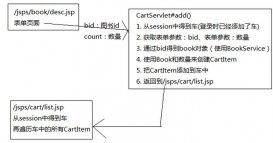因项目需要在一个应用里从两个数据库取数,所以需要配置多数据源,网上找了好多方法才启动成功,整理如下。注意两个数据源的repository文件名不能相同,即使在不同的文件夹下,否则系统启动会报错。
配置文件
|
1
2
3
4
5
6
7
8
9
|
spring.datasource.primary.url=***spring.datasource.primary.username=***spring.datasource.primary.password=***spring.datasource.primary.driver-class-name=com.mysql.jdbc.Driverspring.datasource.second.url=***spring.datasource.second.username=***spring.datasource.second.password=***spring.datasource.second.driver-class-name=com.mysql.jdbc.Driver |
通用数据源配置
|
1
2
3
4
5
6
7
8
9
10
11
12
13
14
15
16
17
18
19
20
21
22
23
24
25
26
27
28
29
30
31
32
33
34
35
36
37
38
39
40
41
|
import com.alibaba.druid.pool.DruidDataSource;import org.springframework.beans.factory.annotation.Qualifier;import org.springframework.boot.autoconfigure.jdbc.DataSourceBuilder;import org.springframework.boot.context.properties.ConfigurationProperties;import org.springframework.context.annotation.Bean;import org.springframework.context.annotation.Configuration;import org.springframework.context.annotation.Primary;import javax.sql.DataSource;/** * @author ruanshuai * @date 2020/5/13 */@Configurationpublic class DataSourceConfig { /** * 第一个数据连接,默认优先级最高 * @return */ @Primary @Bean(name = "primaryDataSource") //数据源1配置名 @Qualifier("primaryDataSource") //数据源1配置名 @ConfigurationProperties(prefix="spring.datasource.primary") //见配置文件 public DataSource PrimaryDataSource() { return DataSourceBuilder.create().type(DruidDataSource.class).build(); } /** * 第二个数据源 * @return */ @Bean(name = "secondDataSource") //数据源2配置名 @Qualifier("secondDataSource") //数据源2配置名 @ConfigurationProperties(prefix="spring.datasource.second") //见配置文件 public DataSource secondaryDataSource() { return DataSourceBuilder.create().type(DruidDataSource.class).build(); }} |
数据源1配置
|
1
2
3
4
5
6
7
8
9
10
11
12
13
14
15
16
17
18
19
20
21
22
23
24
25
26
27
28
29
30
31
32
33
34
35
36
37
38
39
40
41
42
43
44
45
46
47
48
49
50
51
52
53
54
55
56
57
58
59
60
61
62
63
64
65
66
67
68
69
|
import org.springframework.beans.factory.annotation.Autowired;import org.springframework.beans.factory.annotation.Qualifier;import org.springframework.boot.orm.jpa.EntityManagerFactoryBuilder;import org.springframework.context.annotation.Bean;import org.springframework.context.annotation.Configuration;import org.springframework.context.annotation.Primary;import org.springframework.data.jpa.repository.config.EnableJpaRepositories;import org.springframework.orm.jpa.JpaTransactionManager;import org.springframework.orm.jpa.LocalContainerEntityManagerFactoryBean;import org.springframework.transaction.PlatformTransactionManager;import org.springframework.transaction.annotation.EnableTransactionManagement;import javax.persistence.EntityManager;import javax.sql.DataSource;import java.util.HashMap;import java.util.Map;/** * @author ruanshuai * @date 2020/5/13 */@Configuration@EnableTransactionManagement@EnableJpaRepositories( entityManagerFactoryRef="entityManagerFactoryPrimary", transactionManagerRef="transactionManagerPrimary", basePackages= { "***此处为数据源1 repository的存放文件夹***" })public class PrimaryConfig { @Autowired @Qualifier("primaryDataSource") private DataSource primaryDataSource; @Primary @Bean(name = "entityManagerPrimary") public EntityManager entityManager(EntityManagerFactoryBuilder builder) { return entityManagerFactoryPrimary(builder).getObject().createEntityManager(); } @Primary @Bean(name = "entityManagerFactoryPrimary") public LocalContainerEntityManagerFactoryBean entityManagerFactoryPrimary (EntityManagerFactoryBuilder builder) { return builder .dataSource(primaryDataSource) .properties(getVendorProperties()) .packages("***实体类所在文件夹,两个数据源的实体类可相同***") .persistenceUnit("primaryPersistenceUnit") .build(); } private Map<String, String> getVendorProperties() { Map<String, String> jpaProperties = new HashMap<>(16); jpaProperties.put("hibernate.hbm2ddl.auto", "update"); jpaProperties.put("hibernate.show_sql", System.getProperty("spring.jpa.show-sql")); jpaProperties.put("hibernate.dialect", System.getProperty("spring.jpa.properties.hibernate.dialect")); jpaProperties.put("hibernate.current_session_context_class", "org.springframework.orm.hibernate5.SpringSessionContext"); return jpaProperties; } @Primary @Bean(name = "transactionManagerPrimary") public PlatformTransactionManager transactionManagerPrimary(EntityManagerFactoryBuilder builder) { return new JpaTransactionManager(entityManagerFactoryPrimary(builder).getObject()); }} |
数据源2配置
|
1
2
3
4
5
6
7
8
9
10
11
12
13
14
15
16
17
18
19
20
21
22
23
24
25
26
27
28
29
30
31
32
33
34
35
36
37
38
39
40
41
42
43
44
45
46
47
48
49
50
51
52
53
54
55
56
57
58
59
60
61
62
63
64
65
66
67
68
|
import org.omg.CORBA.Environment;import org.springframework.beans.factory.annotation.Autowired;import org.springframework.beans.factory.annotation.Qualifier;import org.springframework.boot.orm.jpa.EntityManagerFactoryBuilder;import org.springframework.context.annotation.Bean;import org.springframework.context.annotation.Configuration;import org.springframework.context.annotation.Primary;import org.springframework.data.jpa.repository.config.EnableJpaRepositories;import org.springframework.orm.jpa.JpaTransactionManager;import org.springframework.orm.jpa.LocalContainerEntityManagerFactoryBean;import org.springframework.transaction.PlatformTransactionManager;import org.springframework.transaction.annotation.EnableTransactionManagement;import javax.persistence.EntityManager;import javax.sql.DataSource;import java.util.HashMap;import java.util.Map;/** * @author ruanshuai * @date 2020/5/13 */@Configuration@EnableTransactionManagement@EnableJpaRepositories( //实体管理 entityManagerFactoryRef="entityManagerFactorySecond", //事务管理 transactionManagerRef="transactionManagerSecond", //实体扫描,设置Repository所在位置 basePackages= { "***此处为数据源1 repository的存放文件夹***" })public class SecondConfig { @Autowired @Qualifier("secondDataSource") private DataSource secondDataSource; @Bean(name = "entityManagerSecond") public EntityManager entityManager(EntityManagerFactoryBuilder builder) { return entityManagerFactorySecond(builder).getObject().createEntityManager(); } @Bean(name = "entityManagerFactorySecond") public LocalContainerEntityManagerFactoryBean entityManagerFactorySecond (EntityManagerFactoryBuilder builder) { return builder .dataSource(secondDataSource) .properties(getVendorProperties()) .packages("***实体类所在文件夹,两个数据源的实体类可相同***") .persistenceUnit("secondPersistenceUnit") .build(); } private Map<String, String> getVendorProperties() { Map<String, String> jpaProperties = new HashMap<>(16); jpaProperties.put("hibernate.hbm2ddl.auto", "update"); jpaProperties.put("hibernate.show_sql", System.getProperty("spring.jpa.show-sql")); jpaProperties.put("hibernate.dialect", System.getProperty("spring.jpa.properties.hibernate.dialect")); jpaProperties.put("hibernate.current_session_context_class", "org.springframework.orm.hibernate5.SpringSessionContext"); return jpaProperties; } @Bean(name = "transactionManagerSecond") PlatformTransactionManager transactionManagerSecond(EntityManagerFactoryBuilder builder) { return new JpaTransactionManager(entityManagerFactorySecond(builder).getObject()); }} |
以上就是本文的全部内容,希望对大家的学习有所帮助,也希望大家多多支持服务器之家。
原文链接:https://www.cnblogs.com/ruanshuai/p/13252625.html













